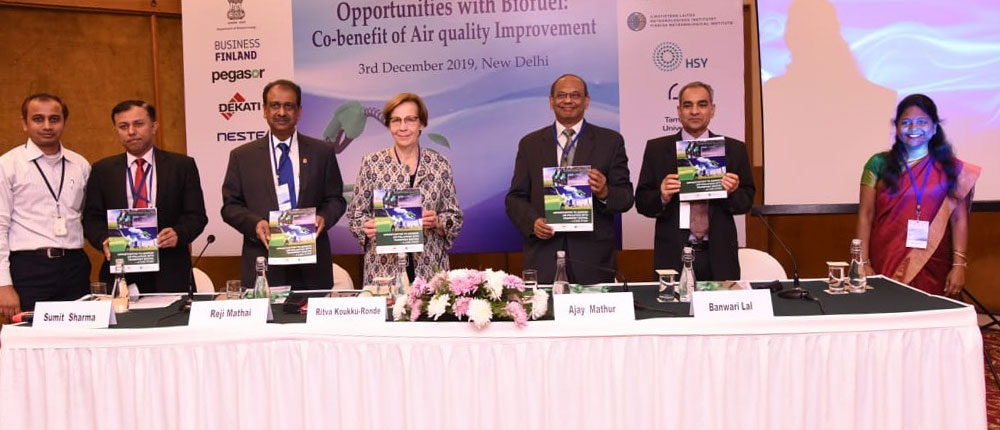Opportunities with Biofuel: Co-benefit of Air Quality Improvement
While biofuels have been discussed as one of the ways to reduce air pollution, changing the process of bio-diesel production is needed to reduce tailpipe emissions of nanoparticles. These are lesser known pollutants even more harmful than PM2.5 and PM10.

The position paper 'Opportunities with Biofuel: Co-benefit of Air Quality Improvement' is based on a study by a consortium of Indian and Finnish research institutes. The study measured the tail-pipe emissions from in use heavy duty vehicles under specific driving cycle using different quality of petroleum diesel, biodiesel, and renewable diesel blends.
The findings of the study suggest that the hydrodecarboxylation process of vegetable oil, used cooking oil, etc. can produce a better quality of biofuel from the tail-pipe emission perspective than the esterification/transesterification process of the above feedstocks to produce FAME biodiesel.
It also makes the following recommendations:
- The biodiesel proposed to be used for blending with the transport fuel should be ester free to reduce the tail-pipe emission of air pollutants, particularly most unhealthy nanoparticles (10–200 nm) for human health.
- Hydrodecarboxylation process of producing biodiesel from vegetable oil, used cooking oil, etc. needs to be endorsed over esterification/transesterification.
- The process requires hydrogen and catalyst. Hence, research on the development of bio-hydrogen and suitable catalyst needs to be promoted.
- This study need to be undertaken with minute detail following standardized protocol for tail-pipe emission measurement to further establish the endorsement of hydrodecarboxylation over esterification/trans esterification process.
See full study here.
